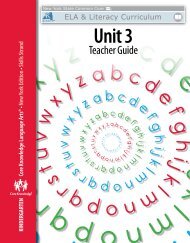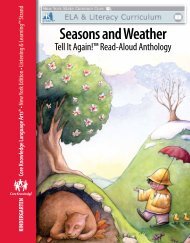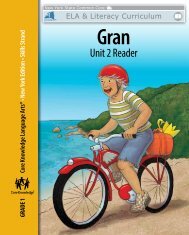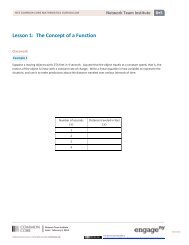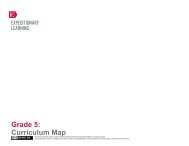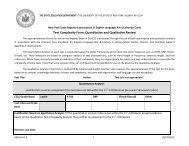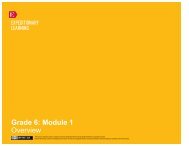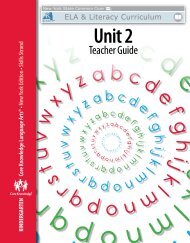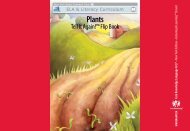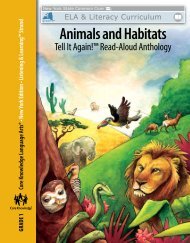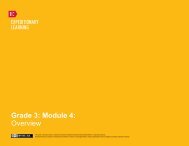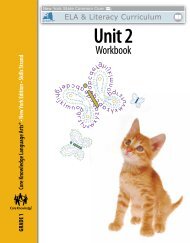Skills Unit 2 Teacher Guide - EngageNY
Skills Unit 2 Teacher Guide - EngageNY
Skills Unit 2 Teacher Guide - EngageNY
You also want an ePaper? Increase the reach of your titles
YUMPU automatically turns print PDFs into web optimized ePapers that Google loves.
and by introduced as Tricky Words. They may even tell you that these are<br />
not Tricky Words because ‘y’ is a spelling for /ie/. If this happens, it is a good<br />
thing. It means these students really know the spelling code (and did not<br />
forget it over the summer). Tell students that they are right, ‘y’ is a spelling for<br />
/ie/, and you will be reviewing this spelling a little later. Explain that my and by<br />
are not tricky if you know ‘y’ is a spelling alternative for /ie/, but those words<br />
are tricky for any student who has not yet learned that alternative. Since you<br />
cannot be sure everybody knows it, you are going to treat these words as<br />
tricky until you teach that spelling pattern.<br />
Reader: Bedtime Tales<br />
Inside the back cover of each Reader you will find the CKLA Code Load<br />
Emblem. It is pictured to the left. The Code Load Emblem lets you know, at a<br />
glance, how many spellings students are expected to know in order to read the<br />
first story and the number of spellings students need to know to read the final<br />
story.<br />
The reader for this unit is Bedtime Tales. In it, a father shares bedtime stories<br />
with his son and daughter. This Reader explores two fiction genres: fables<br />
and trickster stories. Students will enjoy reading the new tales that Dad tells<br />
Mike each night in an effort to get Mike to go to bed. Students will most likely<br />
identify with Mike’s reluctance to go to bed on time.<br />
We will focus on the following literary features of these fictional genres: clever<br />
characters, setting, and plot, as well as morals (fables).<br />
Close Reading<br />
With the adoption of the Common Core State Standards, increasing attention<br />
has been focused on the practice of Close Reading. At the Grade 2 reading<br />
level, we continue our focus on text dependent questions. Starting with<br />
this unit, we will also include direction for teachers to utilize a close reading<br />
approach with several stories from the Reader. We have crafted these lessons<br />
carefully to focus the student on the text itself and precisely what meanings<br />
can be derived from close examination of said text. If you wish to read more<br />
about Close Reading or compose some Close Reading lessons of your own,<br />
please visit this web site: http://www.achievethecore.org<br />
We will start gradually with lessons in this unit introducing the close reading<br />
approach. Close Reading lessons will intensify as the units progress.<br />
Additionally, you will note that wherever these lessons occur, (Lessons 3, 9, and<br />
12 of this unit) our commitment to placing decodable text in the Reader and<br />
Workbook does not waiver. You will find the Close Reading Lessons occurring<br />
about once a week. Please note, some weeks where writing or assessment are<br />
the focus, there may not be sufficient time available to conduct a Close Reading<br />
Lesson.<br />
4 <strong>Unit</strong> 2 | Introduction<br />
© 2013 Core Knowledge Foundation



